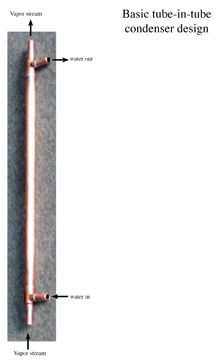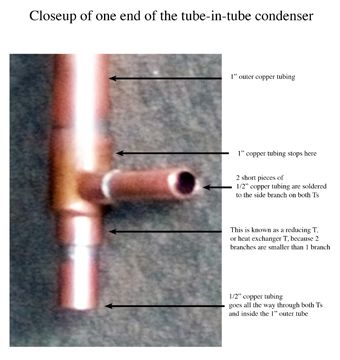It has been mentioned before but not for a while. So i would like to ask those who make fuel from plastic how safe it is to run in engines without long term damage. I appreciate the whole modern engine verses older engine scenario. I guess my question is, is it worth converting plastic waste to fuel if it can cause damage to engines. Is the fuel safe to use in generators or say large wood chipers or old farm tractors. Or is it better to convert to kerosene as imbd does. Any advice would be appreciated. Thanks
Announcement
Collapse
No announcement yet.
How to turn plastic waste into diesel fuel cheaply
Collapse
X
-
The answer to that question is not simple.
Pyrolysis of plastics produces a mixture of hydrocarbon fuels broadly classified as naphtha C5 - C10, kerosene C10 - C 15, and diesel C15 - C20.
In my experience the naphtha is unsuitable as motor fuel in a gasoline engine. Its very low octane rating of 55 causes engines to knock and overheat. Eventually it will cause valve and bearing damage and seizure.
The diesel is a different matter. If the diesel fraction can be confined to only C15 - C20 it should work well as a fuel. This is all very well in theory but in practice is difficult to do. Too much >C20 will produces waxes which will block filters and cause difficult starting. Too much <C15 will reduce lubrication and cause damage to the injection system and injectors.
Another matter is oxidation. Pyrolysis diesel tends to darken over time and a sludge will drop out. This will cause a build up of deposits in the fuel system and long term problems.
So the answer is yes, if diesel is made carefully enough and issues such as oxidation and dertergence can be solved then it should be usable as a motor fuel.Last edited by imakebiodiesel; 08-30-2013, 08:53 AM.
Comment
-
how to figure out what is this plastic type ? PICTURES
I can have each month about 30 kg of this plastic pins for heating water boiler that goes spare and for waste from a factory nearby. However I don't know what type of plastic do they use to make it.
Is it PE or PP or PET ( i hope its not PET ).
Is there a way to make it analyzed or to this by some sort of process - burn or put in water etc.
Here is how it looks like:



It looks very solid color , but actually its a little transparent. Also its easy to tear down and cut and stretch (i guess).
Comment
-
This has been stated several times in the thread before.Originally posted by lowriderzzz View PostI can have each month about 30 kg of this plastic pins for heating water boiler that goes spare and for waste from a factory nearby. However I don't know what type of plastic do they use to make it.
Is it PE or PP or PET ( i hope its not PET ).
Is there a way to make it analyzed or to this by some sort of process - burn or put in water etc.
It looks very solid color , but actually its a little transparent. Also its easy to tear down and cut and stretch (i guess).
Take a small bowl at least 8cm deep and fill it with water. Take one of your plastic pins and push it all the way down to the bottom with your fingers. If it floats it's likely hdpe or pp. If it stays at the bottom dont use it.
Comment
-
Now I remeber somewhere I saw some post like it but I have forgotten about it. ThanksOriginally posted by mjohnson1 View PostThis has been stated several times in the thread before.
Take a small bowl at least 8cm deep and fill it with water. Take one of your plastic pins and push it all the way down to the bottom with your fingers. If it floats it's likely hdpe or pp. If it stays at the bottom don't use it.
Comment
-
Originally posted by lowriderzzz View Postwhat goes in each orifice ? where comes in and out the water and where comes in and out the gasses ?

http://i1084.photobucket.com/albums/...psc2fd410f.jpgI have been running various blends of waste oils and unleaded gasoline in a 1983 Chevy G-20 van with a 6.2L diesel V-8 engine, with a Stanadyne Rotary DB2 IP since Feb, 2007. I have started the engine with no difficulty and no block heater on an 80/20 (WVO/gas) blend down to 0F (-18c). I have found that by blending as little as 15% gasoline in the summer, and as much as 50% in the winter, my engine starts and runs as if it was running on diesel fuel.
Comment
-
Jetijs test is worth trying on itOriginally posted by lowriderzzz View PostI can have each month about 30 kg of this plastic pins for heating water boiler that goes spare and for waste from a factory nearby. However I don't know what type of plastic do they use to make it.
Is it PE or PP or PET ( i hope its not PET ).
Is there a way to make it analyzed or to this by some sort of process - burn or put in water etc.
It looks very solid color , but actually its a little transparent. Also its easy to tear down and cut and stretch (i guess).
Comment
-
I did the test: Doesn't bubble, doesn't make black color on the plastic, doesn't smell bad or sharp.Originally posted by Excalibur View Post

I also did what mjohnson1 suggested - to test if it floats or sinks: It floats
I hope this will be great for feedstock.
Comment
-
It is most probably either nylon or a polyethylene, and most probably not PVC, or PTFE, or ABS.Originally posted by lowriderzzz View PostI did the test: Doesn't bubble, doesn't make black color on the plastic, doesn't smell bad or sharp.
I also did what mjohnson1 suggested - to test if it floats or sinks: It floats
I hope this will be great for feedstock.I have been running various blends of waste oils and unleaded gasoline in a 1983 Chevy G-20 van with a 6.2L diesel V-8 engine, with a Stanadyne Rotary DB2 IP since Feb, 2007. I have started the engine with no difficulty and no block heater on an 80/20 (WVO/gas) blend down to 0F (-18c). I have found that by blending as little as 15% gasoline in the summer, and as much as 50% in the winter, my engine starts and runs as if it was running on diesel fuel.
Comment
-
If the object floats then its PE or PP, either way its good for pyrolysis. It look clean and uncoloured which makes it even better. It cant be nylon because the density of nylon ie 1.15 -1.41 so nylon would sink in water. If you want to distinguish between PE and PP try putting it into a container of clean vegetable oil. PE will sink in vegetable oil and PP will float.
This may not work with every vegetable oil, I use rapeseed ( canola) oil and it works a treat.Last edited by imakebiodiesel; 09-02-2013, 05:24 PM.
Comment
-
thanks I'll try that tooOriginally posted by imakebiodiesel View PostIf the object floats then its PE or PP, either way its good for pyrolysis. It look clean and uncoloured which makes it even better. It cant be nylon because the density of nylon ie 1.15 -1.41 so nylon would sink in water. If you want to distinguish between PE and PP try putting it into a container of clean vegetable oil. PE will sink in vegetable oil and PP will float.
This may not work with every vegetable oil, I use rapeseed ( canola) oil and it works a treat.
Comment
-
Your sample floats in water so its either PE or PP. Both are good for pyrolysis.
If it had sunk it would not be suitable. If it was nylon it would have sunk. Nylon is not suitable because pyrolysis would break it down and release nitrogen( result cyanide) and also oxygen ( result Boom!)
I feel that I should say that I am coming to the conclusion that I should withdraw from this discussion. There are many people who have begun to experiment with this technology who have only the vaguest idea of the risks. Sooner or later some one is going to be seriously injured or lose their life and while I feel that everyone is entitled to take risks with their own life and property I do not wish to be held even partly responsible. I have learned a great deal from my participation in this forum and I wish to thank everyone who has contributed over the last few years.
Comment
-
I really hope you'll stay as you have a lot of knowledge and real world experiences. Without someone to advise them many beginners would be at an even greater risk.Originally posted by imakebiodiesel View PostYour sample floats in water so its either PE or PP. Both are good for pyrolysis.
If it had sunk it would not be suitable. If it was nylon it would have sunk. Nylon is not suitable because pyrolysis would break it down and release nitrogen( result cyanide) and also oxygen ( result Boom!)
I feel that I should say that I am coming to the conclusion that I should withdraw from this discussion. There are many people who have begun to experiment with this technology who have only the vaguest idea of the risks. Sooner or later some one is going to be seriously injured or lose their life and while I feel that everyone is entitled to take risks with their own life and property I do not wish to be held even partly responsible. I have learned a great deal from my participation in this forum and I wish to thank everyone who has contributed over the last few years.
I think you're the farthest along in the plastic to fuel process especially in the catalyst area. I know your advice has helped me a lot and I thank you for all your contributions.
Comment
Comment